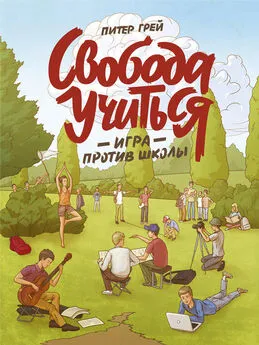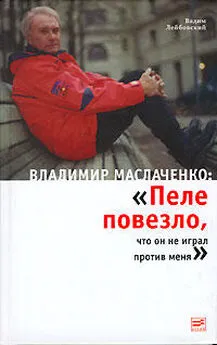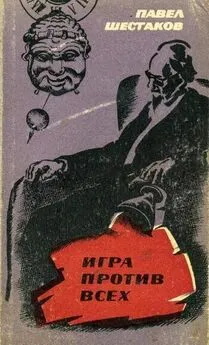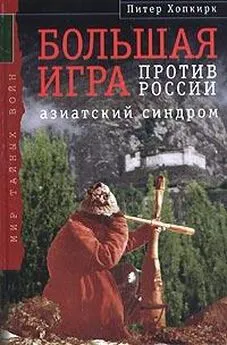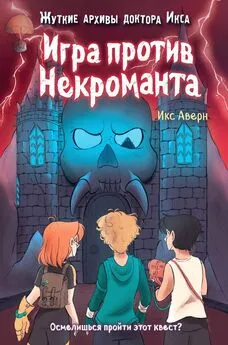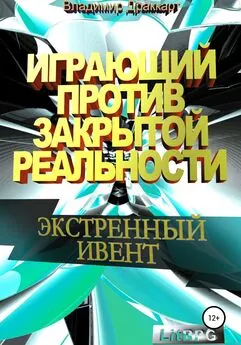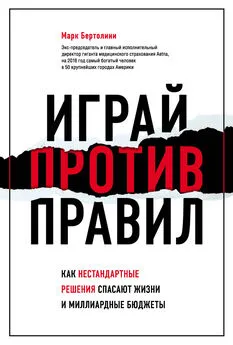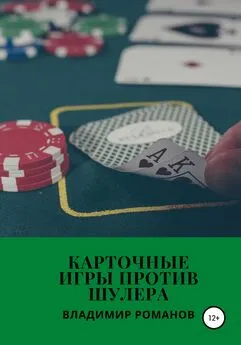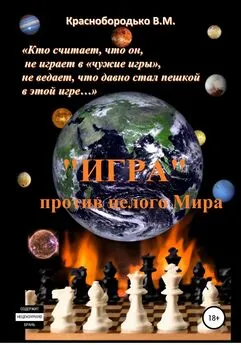Питер Грей - Свобода учиться. Игра против школы
- Название:Свобода учиться. Игра против школы
- Автор:
- Жанр:
- Издательство:Манн, Иванов и Фербер
- Год:2016
- Город:Москва
- ISBN:978-5-00100-207-9
- Рейтинг:
- Избранное:Добавить в избранное
-
Отзывы:
-
Ваша оценка:
Питер Грей - Свобода учиться. Игра против школы краткое содержание
Книга предназначена для родителей, воспитателей, учителей и всех, кто заинтересован в улучшении образования в нашем обществе.
На русском языке публикуется впервые.
Свобода учиться. Игра против школы - читать онлайн бесплатно полную версию (весь текст целиком)
Интервал:
Закладка:
Библиография
Aarts, M., Wendel-Vos, W., van Oers, H. A. M., van de Goor, I. A. M., & Schuit, A. J. (2010). Environmental determinants of outdoor play in children: A largescale cross-sectional study. American Journal of Preventive Medicine, 39, 212–219.
Abramson, L. Y., Metalsky, G. I., & Alloy, L. B. (1989). Hopelessness depression: A theory-based subtype of depression. Psychological Review, 96, 358–372.
Aiello, J. R., & Douthitt, E. A. (2001). Social facilitation from Triplet to electronic performance monitoring. Group Dynamics: Theory, Research, and Practice, 5, 163–180.
Akilli, G. K. (2007) Games and simulations: A new approach in education? In D. Gibson, C. Aldrich, & M. Prensky (Eds.), Games and simulations in online learning: Research and development frameworks (pp. 1–20). Hershey, PA: Information Science.
Aldis, O. (1975). Play-fighting. New York: Academic Press.
Alloy, L. B., Abramson, L. Y., Whitehouse, W. G., Hogan, M. E., Panzarella, C., & Rose, D. T. (2006). Prospective incidence of first onsets and recurrence of depression in individuals at high and low cognitive risk for depression. Journal of Abnormal Psychology, 115, 145–156.
Allport, E. H. (1920). The influence of the group upon association and thought. Journal of Experimental Psychology, 3, 159–182.
Amabile, T. (1996). Creativity in context: Update to the social psychology of creativity. Boulder, CO: Westview Press.
–. (2001). Beyond talent: John Irving and the passionate craft of creativity. American Psychologist, 56, 333–336.
Aristotle. (1963 translation). D. E. Gershenson & D. A. Greenberg (translators). Metaphysica, liber A. The Natural Philosopher, 2, 3–55.
Baillargeon, R. (2004). Infants’ physical world. Current Directions in Psychological Science, 13, 89–94.
–. (2008). Innate ideas revisited. Perspectives in Psychological Science, 3, 2–13.
Bakeman, R., Adamson, L. B., Konner, M., and Barr, R. (1990). Kung infancy: The social context of object exploration. Child Development, 61, 794–809.
Barnett, J., & Coulson, M. (2010). Virtually real: A psychological perspective on massively multiplayer online games. Review of General Psychology, 14, 167–179.
Barry, H., Child, I., Bacon, M. K. (1959). The relation of child training to subsistence economy. American Anthropologist, 61, 51–63.
Beilock, S. L., Kulp, C. A., Holt, L. E., & Carr, T. H. (2004). More on the fragility of performance: Choking under pressure in mathematical problem-solving. Journal of Experimental Psychology: General, 133, 584–600.
Bell, H. C., Pellis, S. M., & Kolb, B. (2010). Juvenile peer play experience and the development of the orbitofrontal and medial prefrontal cortex. Behavioral and Brain Research, 207, 7–13.
Bernard, J. (1836/2007). “Though I was often beaten for my play”: Excerpt from Autobiography of the Rev. John Bernard, Collections of the Massachusetts Historical Society, v. 25. Reprinted in Martin, J. (Ed.) (2007), Children in colonial America. New York: New York University Press.
Black, R. W., & Steinkuehler, C. (2009). Literacy in virtual worlds. In L. Christenbury, R. Bomer, & P. Smargorinsky (Eds.), Handbook of adolescent literacy research, 271–286. New York: Guilford.
Blickle, G., Schlegel, A., Fassbender, P., & Klein, U. (2006). Some personality correlates of white-collar crime. Applied Psychology 55, 220–233.
Blurton Jones, N. (1993). The lives of hunter-gatherer children. In M. E. Pereira & L. A. Fairbanks (Eds.), Juvenile primates: Life history, development, and behavior, 308–326. New York: Oxford University Press.
Blurton Jones, N., Hawkes, K., and Draper, P. (1994). Differences between Hazda and Kung children’s work: Affluence or practical reason? In E. S. Burch Jr. & L. J. Ellana (Eds.), Key issues in hunter-gatherer research, 189–215. Oxford: Berg.
Bock, J. (2005). What makes a competent adult forager? In B. S. Hewlett & M. E. Lamb (Eds.), Hunter-gatherer childhoods: Evolutionary, developmental, and cultural perspectives, 109–128. New Brunswick, NJ: Transaction.
Bock, J., & Johnson, S. E. (2004). Subsistence ecology and play among the Okavango Delta peoples of Botswana. Human Nature, 15, 63–81.
Boehm, C. (1999). Hierarchy in the forest: The evolution of egalitarian behavior. Cambridge, MA: Harvard University Press.
Bonawitz, E., Shafto, P., Gweon, H., Goodman, N. D., Spelke, E., & Schulz, L. (2011). The double-edged sword of pedagogy: Teaching limits children’s spontaneous exploration and discovery. Cognition, 120, 322–330.
Bowles, S., & Gintis, E. (2000). The origins of mass public education. Ch. 33 in Roy Lowe (Ed.), History of education: Major themes. Volume II: Education in its social context. London: RoutledgeFlamer.
Brooks, R., & Meltzoff, A. N. (2002). The importance of eyes. How infants interpret adult looking behavior. Developmental Psychology, 38, 958–966.
–. (2008). Infant gaze following and pointing predict accelerated vocabulary growth through two years of age: A longitudinal growth curve modeling study. Journal of Child Language, 5, 207–220.
Brown, N. S., Curry, N. E., & Tittnich, E. (1971). How groups of children deal with common stress through play. In N. E. Curry & S. Arnaud (Eds.), Play: The child strives toward self-realization. Washington, DC: National Association for the Education of Young Children.
Burghardt, G. M. (2005). The genesis of animal play: Testing the limits. Cambridge, MA: MIT Press.
Burns, S. M., & Brainerd, C. J. (1979). Effects of constructive and dramatic play on perspective taking in very young children. Developmental Psychology, 15, 512–521.
Byers, J. A. (1977). Terrain preferences in the play behavior of Siberian ibex kids (Capra ibex sibirica). Zeitschrift fur Tierpsychologie, 45, 199–209.
Chagnon, N. (1977). Yanomamo: The fierce people, 2nd ed. New York: Holt, Rinehart & Winston.
Chazan, S., & Cohen, E. (2010). Adaptive and defensive strategies in post-traumatic play of young children exposed to violent attacks. Journal of Child Psychotherapy, 36, 133–151.
Christie, J. F., & Stone, S. J. (1999). Collaborative literacy activity in print-enriched play centers: Exploring the “zone” in same-age and multi-age groupings. Journal of Literary Research, 31, 109–131.
Christie, J. F., Stone, S. J., & Deitscher, R. (2002). Play in same-age and multiage grouping arrangements. In J. L. Roopnarine (Ed.), Conceptual, social-cognitive, and contextual issues in the fields of play, 63–75. Westport, CT: Ablex.
Chudacoff, H. P. (2007). Children at play: An American history. New York: New York University Press.
Clark, R. W. (1977). Edison: The man who made the future. New York: Putnam’s Sons.
Clements, R. (2004). An investigation of the status of outdoor play. Contemporary Issues in Early Childhood, 5, 68–80.
Clinton, H. R. (2001). An idyllic childhood. In S. A. Cohen (Ed.), The games we played: A celebration of childhood and imagination. New York: Simon & Schuster.
Cohen, P. A., Kulik, J. A., & Kulik, C. (1982). Educational outcomes of tutoring: A meta-analysis of findings. American Educational Research Journal, 19, 237–248.
Connolly, J. A., & Doyle, A. (1984). Relation of social fantasy play to social competence in preschoolers. Developmental Psychology, 20, 797–806.
Corballis, M. C. (1999). Phylogeny from apes to humans. In M. C. Corballis & S. E. G. Lea (Eds.), The descent of mind: Psychological perspectives on hominid evolution. Oxford: Oxford University Press.
Correa-Chávez, M., & Rogoff, B. (2009). Children’s attentions to interactions directed to others: Guatemalan Mayan and European American patterns. Developmental Psychology, 45, 630–641.
Csíkszentmihályi, M. (1990). Flow: The psychology of optimal experience. New York: Harper & Row.
Csíkszentmihályi, M., & Hunter, J. (2003). Happiness in everyday life: The uses of experience sampling. Journal of Happiness Studies, 4, 185–199.
Dearden, J. (1998). Cross-age peer mentoring in action. Educational Psychology in Practice, 13, 250–257.
Dennett, D. C. (1994). Language and intelligence. In J. Khalfa (Ed.), What is intelligence? Cambridge: Cambridge University Press.
DeVore, I., Murdock, G. P., and Whiting, J. W. M. (1968). Discussions, part VII: Are the hunter-gatherers a cultural type? In R. Lee & I. DeVore (Eds.), Man the hunter. Chicago: Aldine.
Diamond, J. (1997). Guns, germs, and steel: The fates of human societies. New York: Norton.
Dias, M. G., & Harris, P. L. (1988). The effect of make-believe play on deductive reasoning. British Journal of Developmental Psychology, 6, 207–221.
Draper, P. (1976). Social and economic constraints on child life among the Kung. In R. B. Lee & I. DeVore (Eds.), Kalahari hunter-gatherers: Studies of the!Kung San and their neighbors, 199–217. Cambridge, MA: Harvard University Press.
Draper, P. (1988). Technological change and child behavior among the Kung Ethnology, 27, 339–365.
Durkin, K., & Barber, B. (2002). Not so doomed: Computer game play and positive adolescent development. Applied Developmental Psychology, 23,373–392.
Eccles, J. S., Wigfield, A., Midgley, C., Reuman, D., MacIver, D., & Feldlaufer, H. (1993). Negative effects of traditional middle schools on students’ motivation. Elementary School Journal, 93, 553–574.
Education Portal (2007). Published online at http://education-portal.com/articles/75_to_98_Percent_of_College_Students_Have_Cheated.html.
Eibl-Eibesfeldt, I. (1982). The flexibility and affective autonomy of play. Behavioral and Brain Sciences, 5, 160–162.
–. (1989). Human ethology. New York: Aldine de Gruyter.
Einon, D. F., Morgan, M. J., & Kibbler, C. C. (1978). Brief periods of socialization and later behavior in the rat. Developmental Psychobiology, 11, 231–225.
Einstein, A. (1949). Autobiography. In P. Schilpp, Albert Einstein: Philosopherscientist.
Evanston, IL: Library of Living Philosophers.
Eisen, G. (1988). Children and play in the Holocaust: Games among the shadows. Amherst: University of Massachusetts Press.
Elias, C. L., & Berk, L. E. (2002). Self-regulation in young children: Is there a role for sociodramatic play? Early Childhood Research Quarterly, 17, 216–238.
Ember, C. R. (1973). Feminine task assignment and the social behavior of boys. Ethos, 1, 424–439.
Ember, C. R., & Ember, M. (2005). Explaining corporal punishment of children: A cross-cultural study. American Anthropologist, 107, 609–619.
Emfinger, K. (2009). Numerical conceptions reflected during multiage childinitiated pretend play. Journal of Instructional Psychology, 36, 326–334.
Engel, S. (2006). Open Pandora’s box: Curiosity in the classroom. Sarah Lawrence Child Development Institute Occasional Papers. Published online at www.slc.edu/media/cdi/pdf/Occasional%20Papers/CDI_Occasional_Paper_2006_Engel.pdf.
–. (2009). Is curiosity vanishing? Journal of the American Academy of Child and Adolescent Psychiatry, 48, 777–779.
Ensign, F. C. (1921). Compulsory school attendance and child labor. Iowa City, Iowa: Athens Press.
Estrada, C. A., Isen, A. M., & Young, M. J. (1997). Positive affect facilitates integration of information and decreases anchoring in reasoning among physicians. Organizational Behavior and Human Decision Processes, 72, 117–135.
Fagen, R. (1981). Animal play behavior. New York: Oxford University Press.
Fairbanks, L. A. (2000). The developmental timing of primate play: A neural selection model. In Parker, S. T., Langer, J., & McKinney, M. L. (Eds.), Biology, brains, and behavior: The evolution of human development, 131–15). Santa Fe, NM: School of American Research Press.
Читать дальшеИнтервал:
Закладка:
